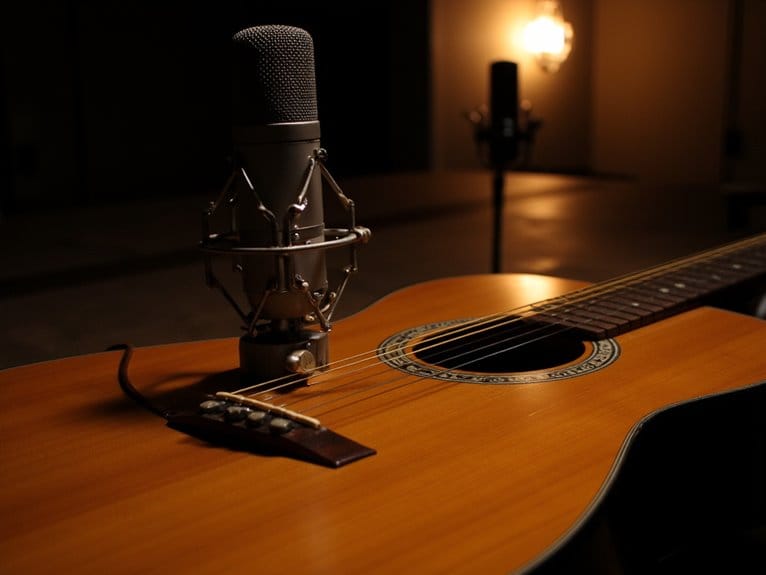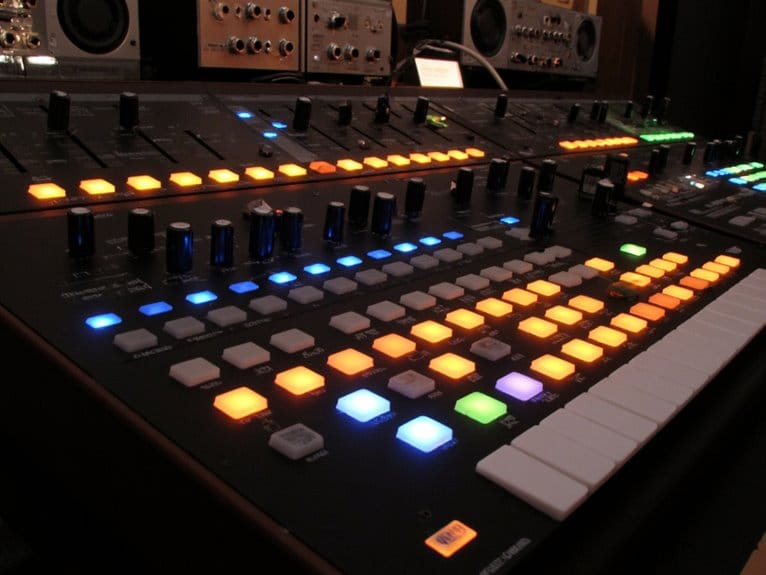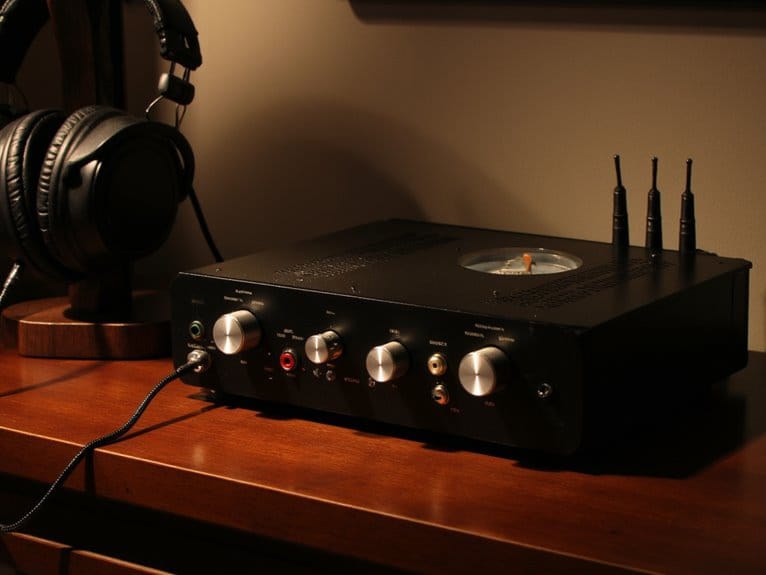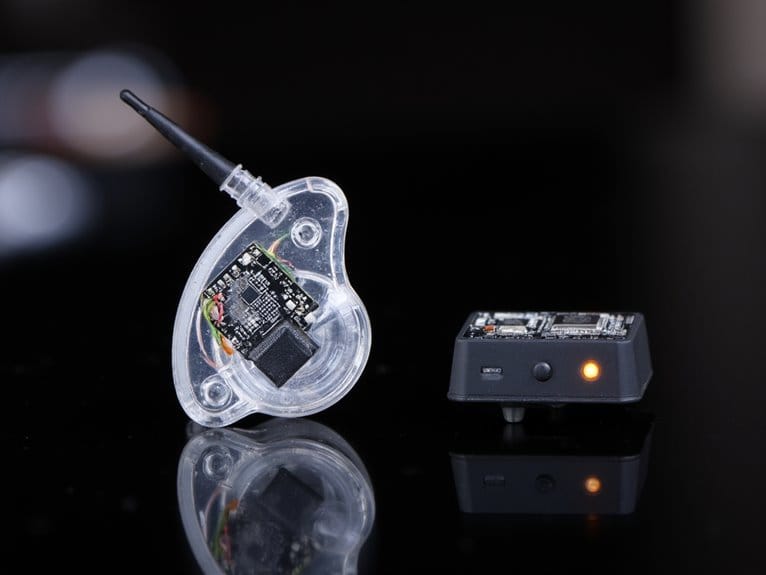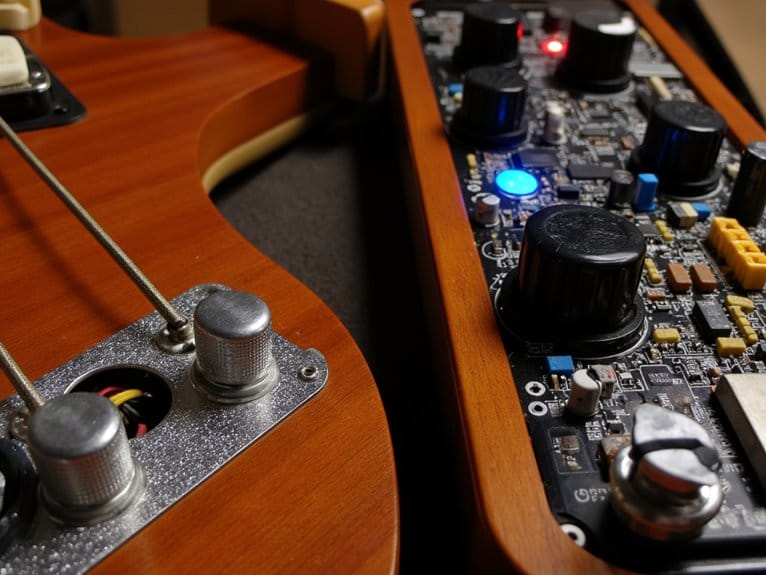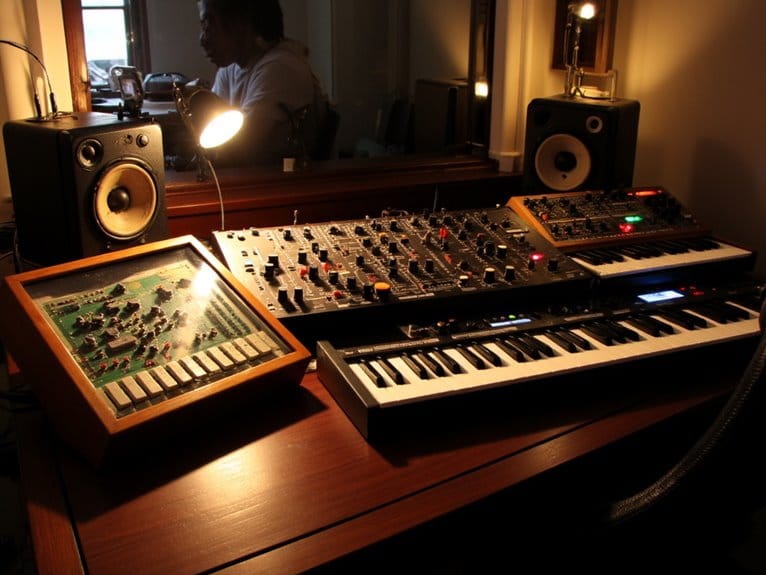Close-Mic vs. Room-Mic: When to Use Each Approach
You’ll want close-miking when you need exceptional sonic clarity and detailed articulation for solo performances, placing cardioid mics 4-6 inches away to capture direct sound waves while eliminating unwanted ambient noise. Room-miking works best for ensemble recordings and genres like jazz or classical, where you’re preserving natural spatial relationships and acoustic character through ambient reflections. Combining both techniques gives you independent processing control over intimate detail and spacious ambience, and there’s much more strategy behind maximizing this flexibility.
We are supported by our audience. When you purchase through links on our site, we may earn an affiliate commission, at no extra cost for you. Learn more.
Notable Insights
- Use close-mic placement for solo performances requiring detailed articulation and minimal background noise interference.
- Choose room mics for ensemble recordings and genres like jazz or classical to capture natural spatial relationships.
- Close-miking with cardioid patterns works best for aggressive vocals and situations needing sound source isolation.
- Room placement preserves acoustic environment character and creates spacious, three-dimensional sound with tonal complexity.
- Combine both techniques for maximum flexibility, allowing independent processing of direct and ambient signals.
Understanding the Sonic Characteristics of Each Microphone Placement
When I first started recording, I thought placing a microphone was as simple as pointing it at whatever I wanted to capture, but I quickly discovered that the distance between your mic and sound source fundamentally shapes the entire character of your recording.
Close-mic placement delivers exceptional sonic clarity by capturing direct sound waves with minimal interference, resulting in brighter, more detailed recordings that emphasize attack transients and intimate details you’d otherwise miss.
Room mics, however, excel at capturing tonal complexity through ambient reflections and natural reverberations, creating that spacious, full-bodied sound that makes recordings feel alive and three-dimensional.
The proximity effect from close miking adds bass richness, while room mics produce thinner tones due to distance, requiring you to evaluate which sonic signature best serves your artistic vision.
Strategic Applications for Different Recording Scenarios
Understanding these sonic differences between close-mic and room-mic techniques becomes practically valuable once you start matching your microphone placement to specific recording scenarios, because the wrong choice can make even expensive gear sound amateur while the right approach transforms modest setups into professional-sounding productions.
When you’re tracking solo performances requiring detailed articulation, close-micing delivers the clarity you need while eliminating unwanted ambient sounds that could muddy your mix. Conversely, if you’re capturing ensemble work or want natural spatial relationships, room mics excel at preserving those live interactions that make recordings feel three-dimensional.
I’ve found that multi-instrument sessions typically demand close-mic isolation for independent processing, while genres like jazz or classical benefit from room placement that captures the acoustic environment’s character. For optimal results, consider microphones with a cardioid polar pattern when close-micing, as this directional characteristic effectively minimizes background noise while maintaining focus on your primary sound source.
For aggressive vocal styles, close-micing becomes especially critical since positioning the microphone within 4-6 inches of the source provides the control needed to capture powerful vocal passages without compromising clarity.
Combining Both Techniques for Maximum Flexibility
Rather than forcing yourself to choose between close-mic precision and room-mic ambience, you’ll discover that combining both techniques creates a sonic palette that’s far more versatile than either approach alone.
This gives you the detailed articulation of close placement alongside the natural spatial characteristics that make recordings feel alive and three-dimensional.
Your mixing strategies become exponentially more flexible when you’ve captured separate close and room signals. This allows independent processing of each element while maintaining phase coherence between the blended sources.
This tonal blending approach lets you dial in exactly the right balance of intimacy versus spaciousness, adjusting the ratio dynamically throughout your mix to enhance musical expression. Proper microphone placement becomes critical for achieving optimal sound capture when implementing this dual approach.
- Independent EQ and compression control for close versus ambient signals
- Natural reverb options without relying solely on artificial plugins
- Dynamic automation of spatial impression throughout the song
- Enhanced stereo imaging through proper mic positioning techniques
- Maximum creative control over perceived recording environment characteristics
On a final note
You’ll find that mastering both close-mic and room-mic techniques gives you complete control over your recordings, though I’ll admit it took me years to appreciate room ambience properly. Your choice depends on the source material, acoustic environment, and desired sonic character, but don’t hesitate to experiment with blending both approaches. Trust your ears, adapt to each situation, and you’ll develop the instincts needed for professional-quality results. When selecting the best mic for studio recording, consider the unique qualities of different microphones and their interaction with the environment. Each mic has its strengths and weaknesses, and knowing how to leverage these will enhance your recordings significantly. By applying these techniques, you’ll not only refine your sound but also elevate your overall production skills.

